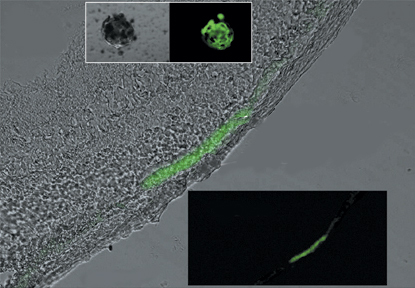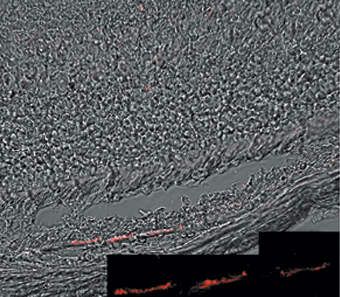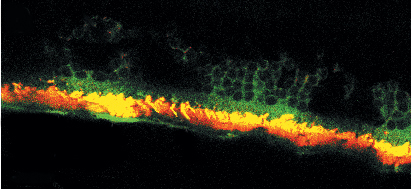Retinal Stem Cells
We have discovered a surprising capacity of the adult mammalian eye to regrow. Based on our work on neural stem cells in the adult mammalian forebrain (embryonic cells that persist in the adult forebrain and can continue to give rise to neurons and glial cells in adults), we found that single pigmented cells from the ciliary margin zone of the adult mouse retina will proliferate in culture to form spheres of 15.000 cells. These clonally derived adult spheres demonstrate the 2 cardinal properties of stem cells: the ability to self-renew (several new spheres can be generated from the dissociation of each starting sphere, and this appears to continue indefinitely) and multipotentiality (the ability to generate progenitor cells that give rise to all of the different neuronal and glial cell types in the retina). Moreover, these same retinal stem cells can be generated easily from the human retina; there are about 10,000 retinal stem cells in each human eye and they persist into the 9th decade of human life.
Our research investigates how the activity of these mammalian retinal stem cells are controlled in the eye. In particular, we look at what genes control stem cell activity. Furthermore, we will attempt to better purify the retinal stem cells from other retinal cells. This work is significant in that it sets the stage for using human retinal stem cells (either transplanted or endogenously activated) to repair the retinas of the blind.
Our experimental approach involves the culture of mouse retinal stem cells from normal mice and mice carrying various genetic mutations that affect eye development, in order to understand the factors that control retinal stem cell activity. We transplant adult mouse and human stem cells (after their isolation in culture) back into the eyes of normal and damaged mouse eyes to ask if the progeny of the transplanted retinal stem cells can replace missing retinal cells and functionally improve vision in mice with visual problems.
 |
 |
 |
|
**The above photos depict transplanted human retinal stem cells into a developing mouse eye, showing integration and differentiation into both photoreceptor and retinal pigmented epithelial cell types after 30 day survival in vivo.
Related Publications
Ballios, B., Clarke, L., Coles, B., Shoichet, M., van der Kooy, D. The adult retinal stem cell is a rare pigmented cell in the ciliary epithelium that can differentiate into photoreceptors. Biology Open. 1 (2012) 237-246; doi:10.1242/bio.2012027
Inoue, T. Coles, B.L.K., Dorval, K., Bremner, R., Bessho, Y., Kageyama, R., Hino, S., Matsuoka, M., Craft, C.M., Mclnnes, R.R., Temblay, F., Prusky, G.T., Tano, Y., and van der Kooy, D. Maximizing functional photoreceptor differentiation from adult human retinal stem cells. Stem Cells. 28 (2010) 489-500. (inoue...2010...)
Coles BL, Angenieux B, Inoue T, Del Rio-Tsonis K, Spence JR, McInnes RR, Arsenijevic Y, van der Kooy D. Facile isolation and the characterization of human retinal stem cells. Proc Natl Acad Sci U S A. 2004 Nov 2;101(44):15772-7. :... download in .pdf ...:
Tropepe V, Coles BL, Chiasson BJ, Horsford DJ, Elia AJ, McInnes RR, van der Kooy D. Retinal stem cells in the adult mammalian eye. Science. 2000 Mar 17;287(5460):2032-6. :...download in .pdf ...:
:. Photo Credit: Brenda Coles-Takabe .:
